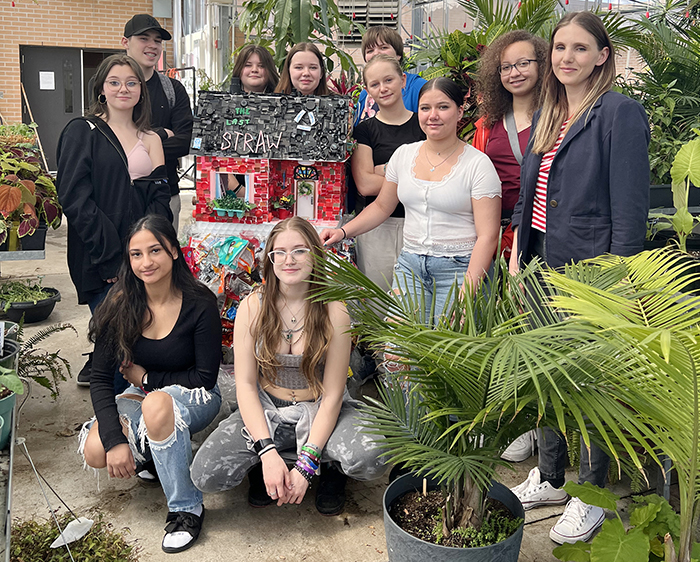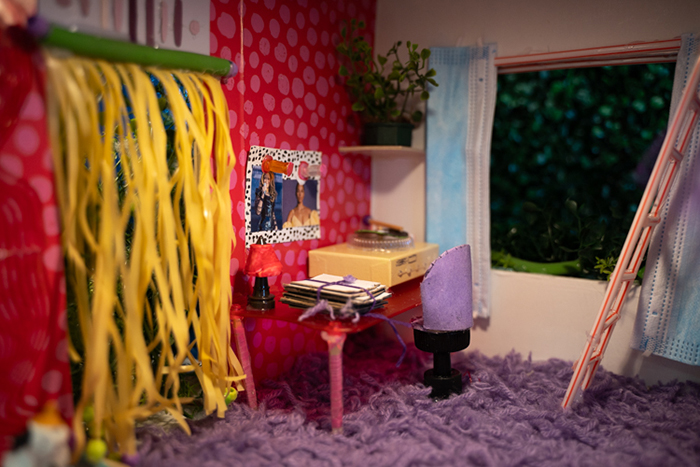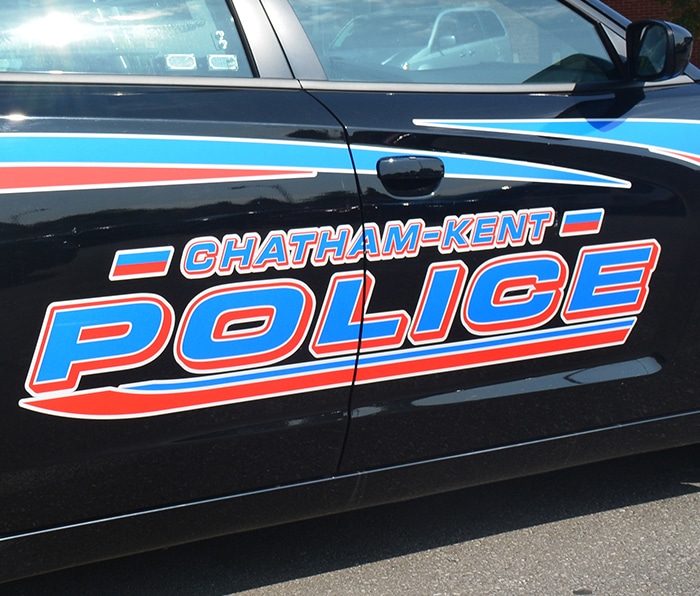
By Pam Wright
Local Journalism Initiative Reporter
Art students at John McGregor Secondary School are sounding the alarm about the lasting damage plastic has on the environment.
Spurred by an idea from local artist Mark Rinehart, they’ve created a project called The Last Straw. It aims to promote social justice through art by raising awareness about garbage, forever plastics, greenwashing and environmental racism, whereby Canada’s waste is shipped to impoverished countries.
It’s a big problem. Every Canadian produces about 720 kilograms of waste annually, meaning Canada leads the world as the largest per capita creator of garbage. It’s currently estimated that only nine per cent of plastics are recycled.
In response, students used garbage to create a miniature house, to symbolize the growing problem.

The concept was conceived by Reinhart, an equity and inclusion representative with the Lambton Kent District School Board. Dubbed “Tiny Futures,” the initiative allows artists to conceptualize and create art projects that explore ideas about the future.
Reinhart donated a dollhouse that he and his sister had when they were children, and JMSS art pupils revamped it using cast-off plastic waste.
Students say The Last Straw opened their eyes.
“I feel like it shows how genuinely disgusting this world can be,” said Marina Thompson. “Canadians are not cleaning up after themselves. I think this project emphasizes that. I feel like our generation and future generations will have to deal with that later on in life and who knows if future generations will clean it up or let it rot there.”
Emily Muise and Jayce Galick share Thompson’s concerns.
“I was aware it was a major problem,” Galick said. “But I didn’t realize how bad it really was until we researched it as a class. It’s a lot worse…the numbers are up there. Even one piece of plastic created 100 years ago, it’s still going to be there.”
Muise said that while she was aware of the garbage and plastics problems, she didn’t know specifics, such as the fact that less than nine per cent of Canada’s so-called recycled materials are actually recycled. Much of the plastic waste is shipped overseas to be recycled but ends up being landfilled or burned.
“I didn’t realize other countries had to deal with our garbage,” Muise said, adding she does what she can for the environment, such as composting, and tries to limit waste and use of plastics.
Ontario’s Blue Box program, which the students say is a provincial greenwashing tactic, was among the topics studied as part of The Last Straw. According to the group, it allows plastic manufacturers and producers to increase their plastic production under the guise of environmentally friendly services.
Climate change, the fact that plastics don’t break down, and the closure of landfills because they’re running out of space were also examined.
As a result, the art students decided to take further action by writing a letter to Chatham-Kent Leamington MP Dave Epp. The letter calls on the federal government to support a ban on single-use plastics and a Global Plastics Treaty.
The federal Minister of Environment and Climate Change, Steven Guilbeault, is copied on the letter as well.
“We feel that it is unreasonable to financially profit and invest in the plastics industry when it comes at the expense of our future. Many of us feel dreadful about the future and believe there is more that the Chatham-Kent region can do to help,” the letter reads. “As a farming community, we feel that sustainable environmental practices should go hand in hand with farming practices. In protecting our land, we are prolonging the fertility of our soil, clean drinking water and air.”
Student teacher and artist Samantha Gurrey, who helped JMSS art teacher Jenn McQuade with The Last Straw project, said it’s key that students learn how art can help fuel change.
“I think it’s important that students can learn that art can give you a voice for whatever social justice practices they are passionate about,” Gurrey said. “You can put your concerns into art and let it speak for itself.”
In order to build awareness, The Last Straw was presented to all 600 JMSS students. Plans are in the works to expand the project to other schools if the interest is there.







